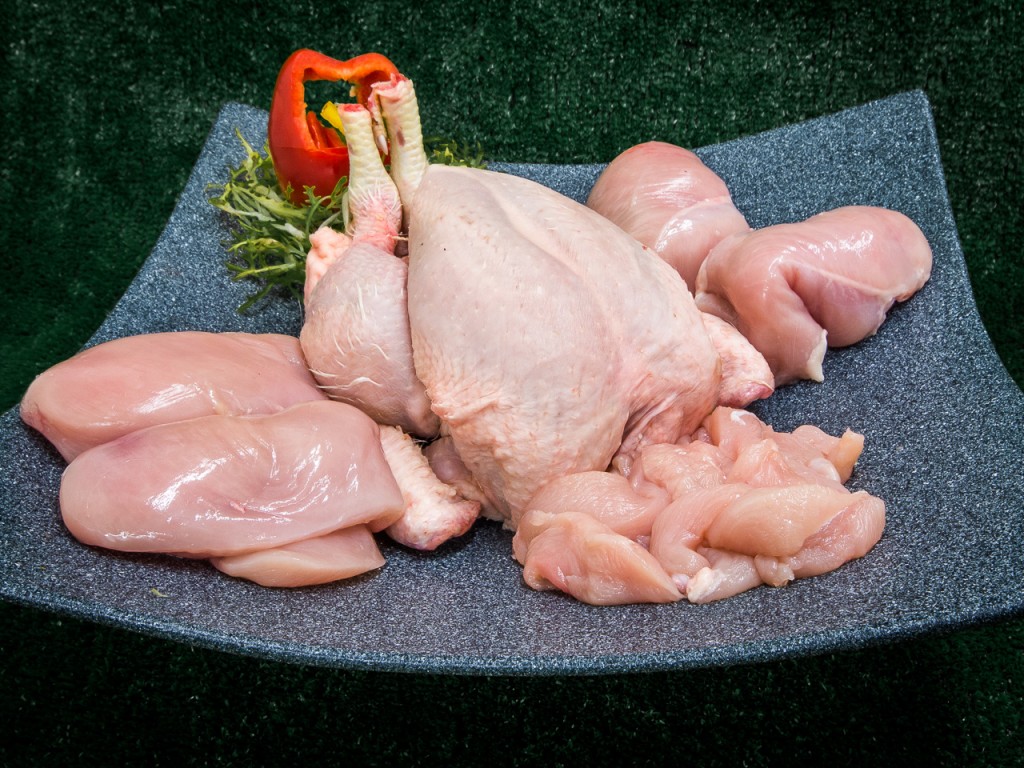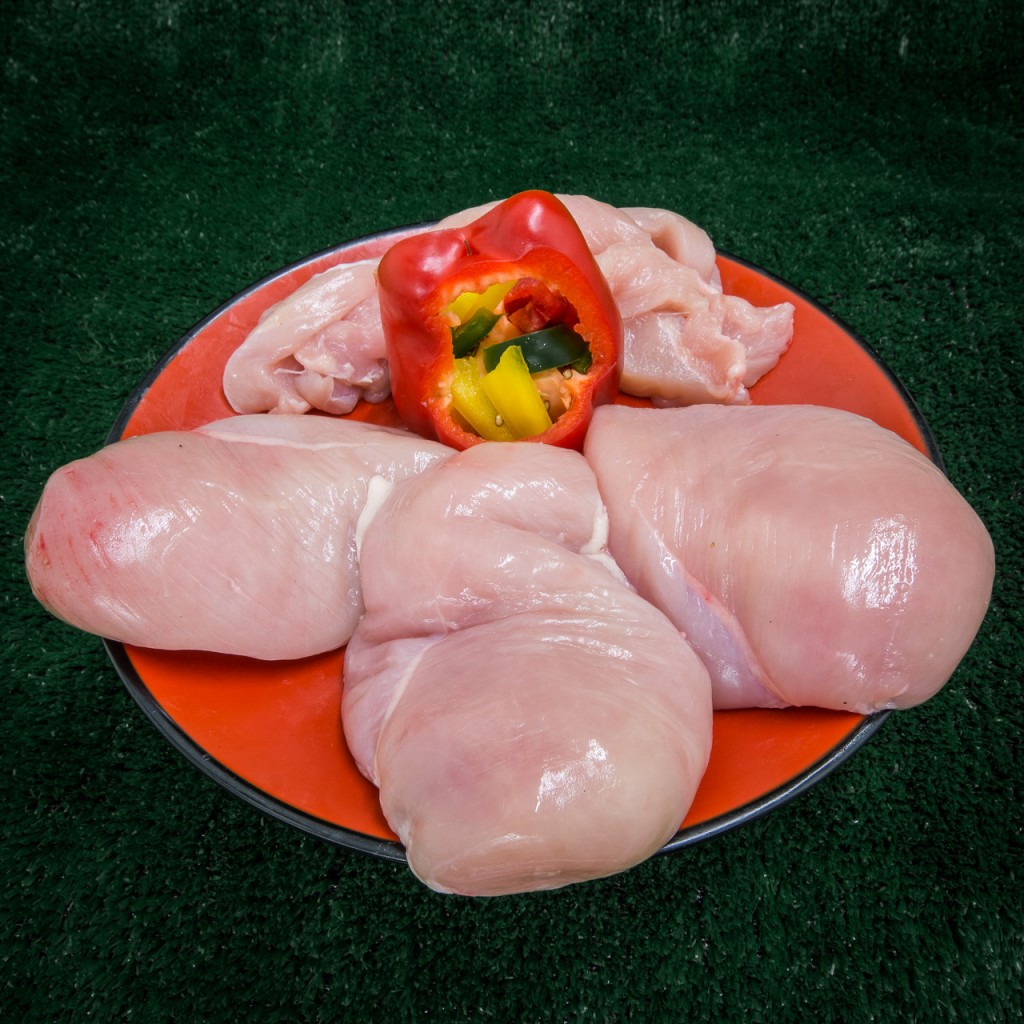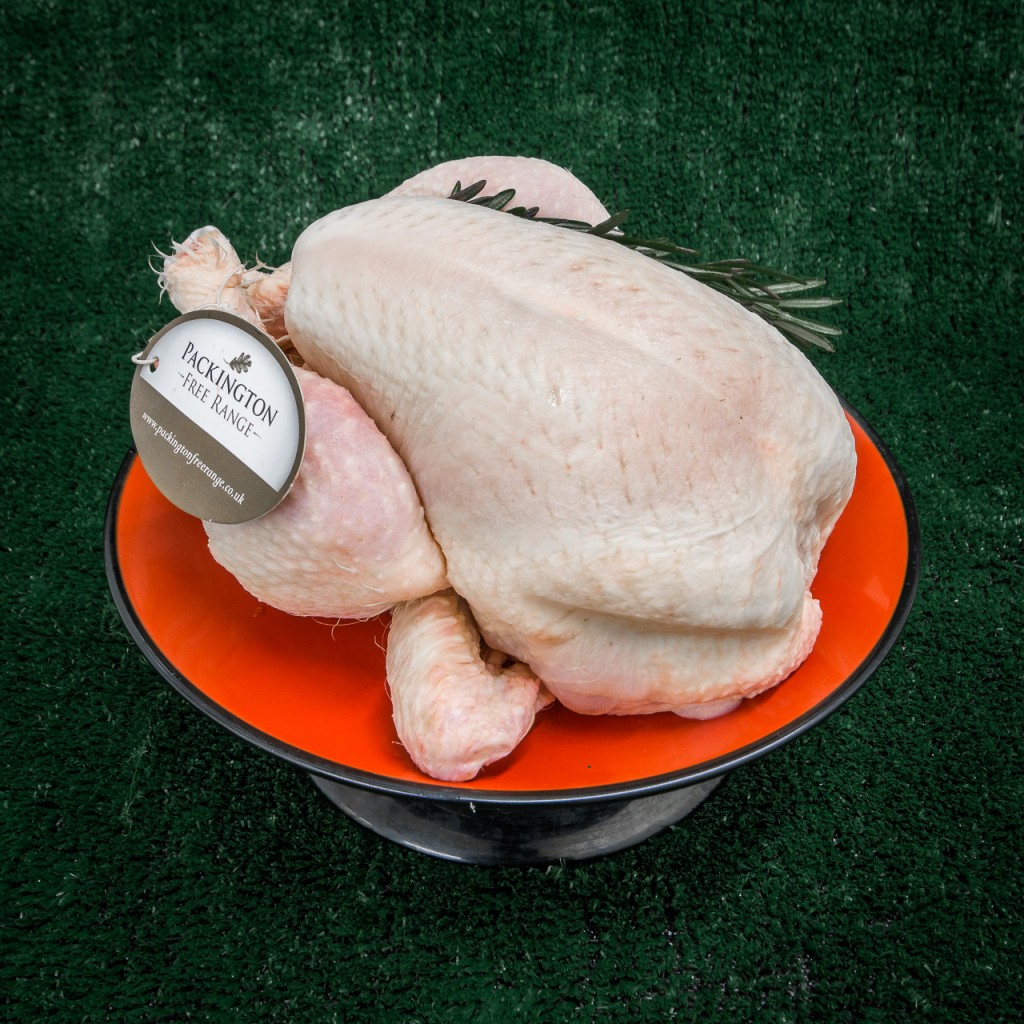



Choose the best
As is the case with all meat, buy your chicken from a source that you trust – you will want to know where it comes from and how it was reared. Traceability like that will give you assurance that the chicken has been humanely treated while alive; the higher the standard of welfare by which a chicken was reared, the better the quality of the meat.
Organic chicken is the most expensive, as the most stringent farming standards should have been adhered to at all stages of the animal’s life, including being allowed to roam outside during the day and being fed a mainly organic diet. As they are allowed to mature slowly (up to 14 weeks) their flesh is firm and flavourful, though, because they have had lots of exercise during their lives, they may be less plump than indoor-reared birds.
Free-range chicken should have had some access to the open air and they are cheaper than organic. Corn-fed chicken have a bright yellow skin, a result of having been fed corn or maize. The colour looks good, but fades on cooking, and doesn’t make much difference to flavour.
Battery (or ‘factory’) reared chicken (sometimes called ‘broilers’) are the most commonly available kind. They are rarely labelled as such, but the extremely low price is a giveaway. Although such chickens are very affordable, the conditions they experience in their brief lives (up to 6 weeks) may be extremely grim, packed at high densities, with little room to move around and little or no access to sunlight – all of which produces a noticeably inferior and often quite fatty meat.
Read more about animal welfare in general at the Soil Association.
Various breeds are available. Look out for slow-growing British breeds with firm, flavourful meat such as Oakham White, Cotswold White or Gold and Devonshire Gold or Red. French breeds, such as poulet de bresse, poulet d’or, poulet noir and poulet anglais are also very good, with succulent, strongly flavoured flesh.
Whole birds are good for roasting or barbecuing. Other portions are also available (either skin on or off, on the bone or boneless), including breasts (fry, saut´, grill or barbecue); drumsticks (grill or barbecue); thighs (barbecue or use in casseroles or stirfries); and wings (barbecue or roast).
Whichever breed, type or cut of chicken you choose, look for birds or cuts that have clear, soft skin, without bruising, blemishing or tears. Look also for brownish-red ‘hock burn’ on the skin on the legs, as this may be a sign that the bird has not been kept in the most satisfactory conditions during growth.
Prepare it
If desired, certain cuts of chicken can be marinated before cooking, to add flavour and moisture and to tenderise a little further – slash the skin a couple of times to help the marinade penetrate further.
Before it goes in the oven, chicken should be at room temperature, so take it out of the fridge (1 hour for a whole chicken; 30 minutes for a cut) before cooking. Keep it covered, in a cool place.
Store it
Fresh chicken goes off very quickly, especially if the weather is warm, so should be stored in the fridge as soon as you get it home. Take off all the wrappings, then wipe it all over (and inside the cavities) with kitchen paper. If it has come with giblets (the neck, gizzard, heart and liver) these should be removed and kept in a covered bowl in the fridge. Put the chicken on a tray or a plate wide and deep enough to contain any blood or juice that might seep out. Cover loosely with foil. Make sure the chicken is stored in the fridge doesn’t touch any food that’s to be eaten raw, or meat that is already cooked.
Whole birds and pieces of chicken will keep for up to 2 days. Chicken liver or minced chicken should be cooked within 24 hours of purchase.
Giblets can be used to make gravy and stock (but leave the liver out, as it can create quite a bitter taste) or stuffing, and should be cooked within 2 days of purchase.
Cook it
Roast at 200C/180C fan/gas mark 6 (whole chicken: 25 minutes per 500g, plus an extra 25 minutes; breasts, 15 minutes; thighs and wings, 40 minutes). Grill or barbecue (breast, 7-10 minutes; cubes or strips, 5-7 minutes; drumsticks and thighs, 25-30 minutes; wings, 40 minutes). Stir fry (cubes or strips, 5-7 minutes). Always check that there is no pink meat and that the juices run clear (pierce with a sharp knife or skewer) before serving.